“Demand to See:” A Painter on His Vision Loss
May 13, 2019
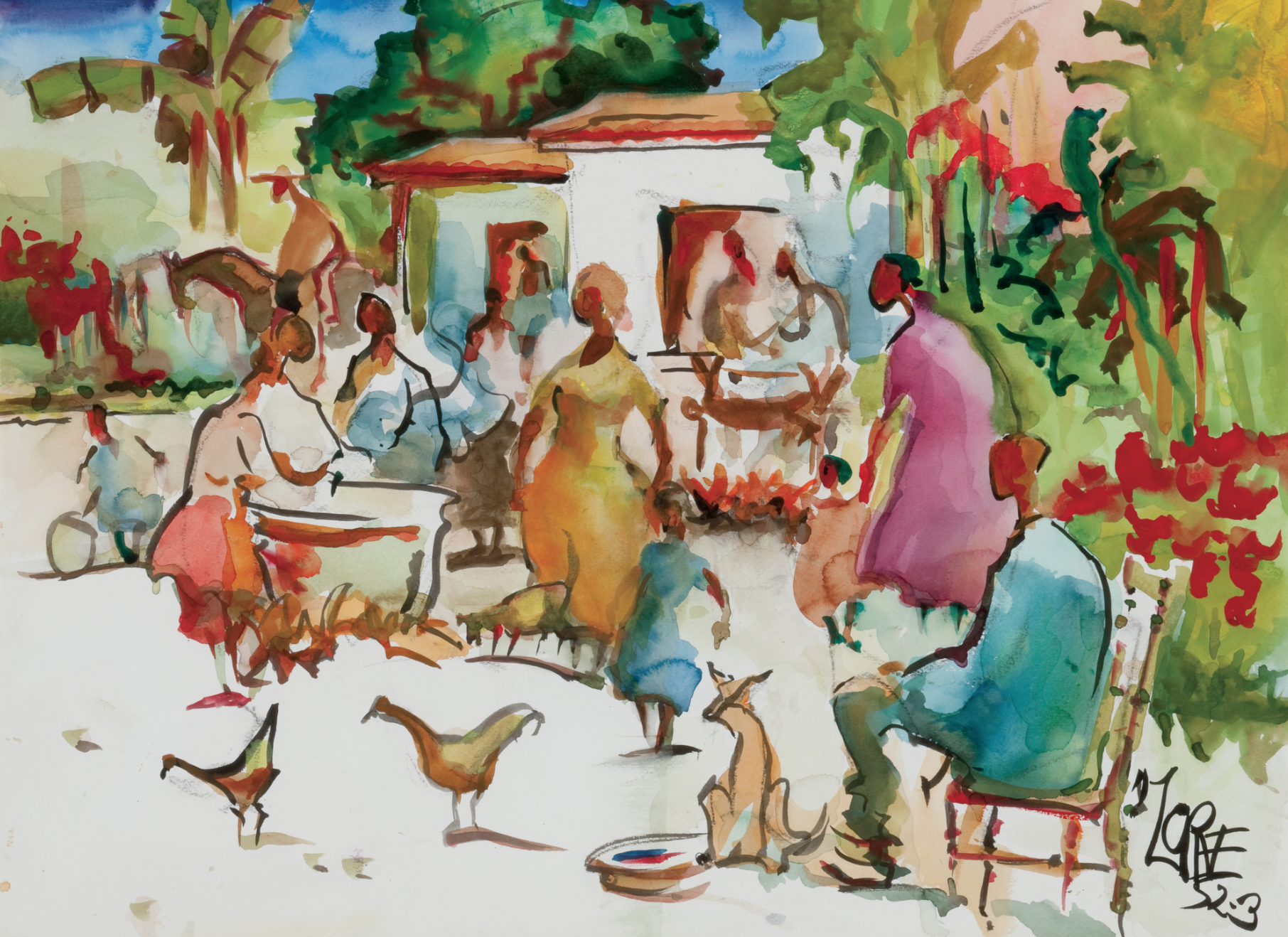
Milford Zornes wrote about being legally blind in an essay entitled “Demand to See.” His feelings about his vision loss were complicated and messy.
In 1989, Milford Zornes, a renowned watercolor painter and teacher, learned that he had macular degeneration. The good news, his ophthalmologist said, was that he probably wouldn’t go completely blind. The bad news? He’d have compromised vision for the rest of his life. Nothing could be done about it.
Seven years later, Zornes would affirm that, despite macular degeneration, he was at his peak as a painter. Before reaching this point of affirmation, however, he suffered a prolonged period of grief, which he wrote about in a 1996 essay, “Demand to See”. “No matter how reasonable and fair-minded one may be, this personal disaster is the single most important one ever experienced.”
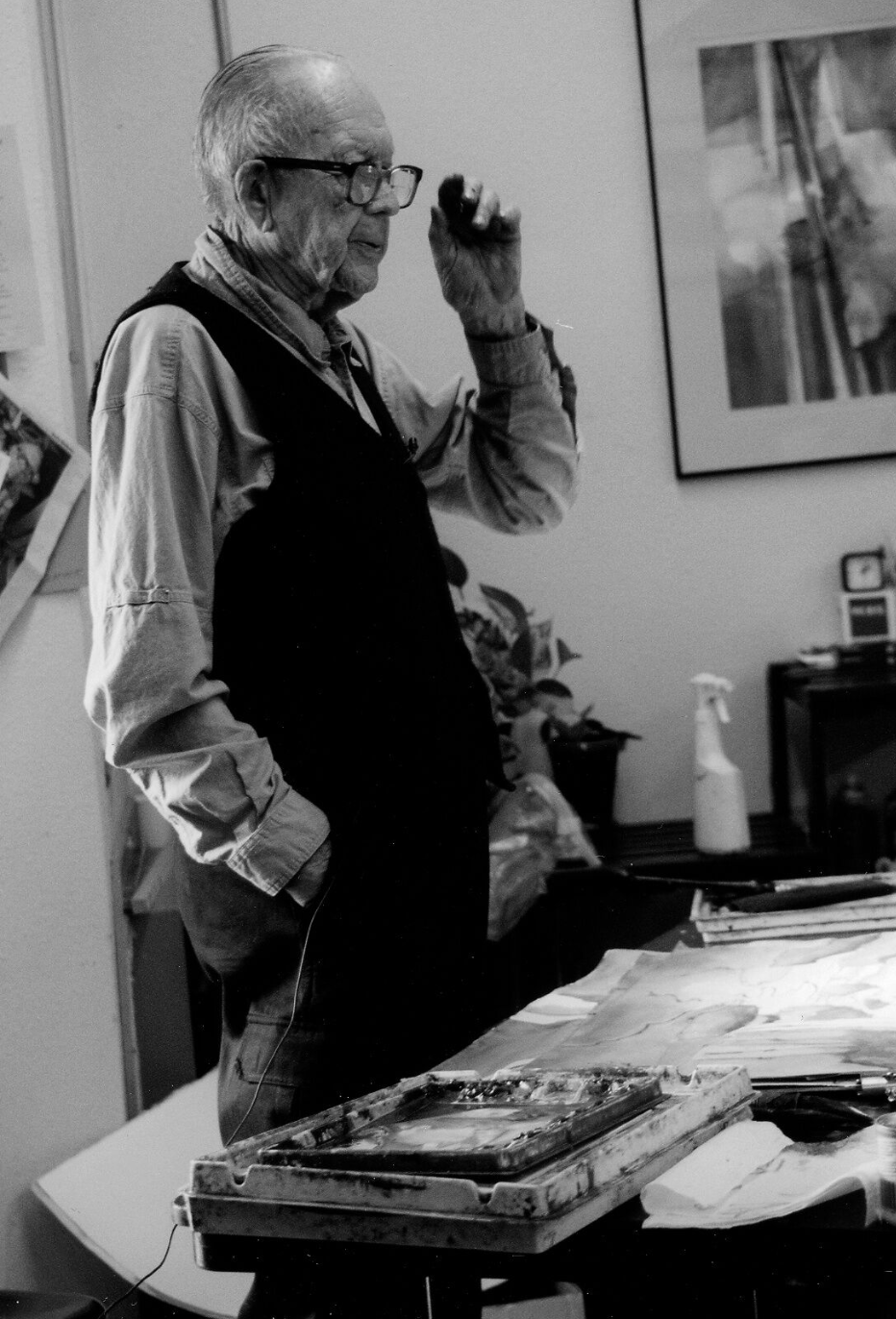
“Demand to See” is the only sustained piece of writing I know of by an artist about having macular degeneration. In his essay, Zornes recounts his first despairing years after his diagnosis. Then he describes his cautious optimism as he began to accept his new reality, making changes to his life and studio practices that eventually allowed him to continue painting.
Zornes put a lot of physical and emotional effort into writing “Demand to See.” The prose shows this and reads as having been laboriously drafted. (Which in fact it was.) As he describes, he wrote in longhand, following “the rhythm of letters,” unable to look back on what he had written, keeping his “nose to paper and shaping each letter and word as completely as possible”. He made this effort because he wanted people in a similar situation to understand that “there is life after macular degeneration, that not all senses are set on hold because of this one limitation.”
And yet, in “Demand to See,” Zornes gives us something more than a story of personal transcendence over loss. More important, perhaps, he gives us an honest depiction of what it’s like to lose a major faculty like sight and how hard it is to reorient oneself to a new reality. Before he could discover the good in macular degeneration, he had to experience anger, grief, frustration, fear, and many other emotions that we often have a hard time acknowledging.
Early on, when my vision, though impaired, was far better than it is now, I went into complete depression. I felt that my life was over. Not to see with normal acuity was unbearable. The hateful, blurred central vision was so distressing that I could see no future. No gentle suggestions by friends or my wife, that I could adjust and find ways to live with the problem, were accepted. They could say those things because they did not have the problem.
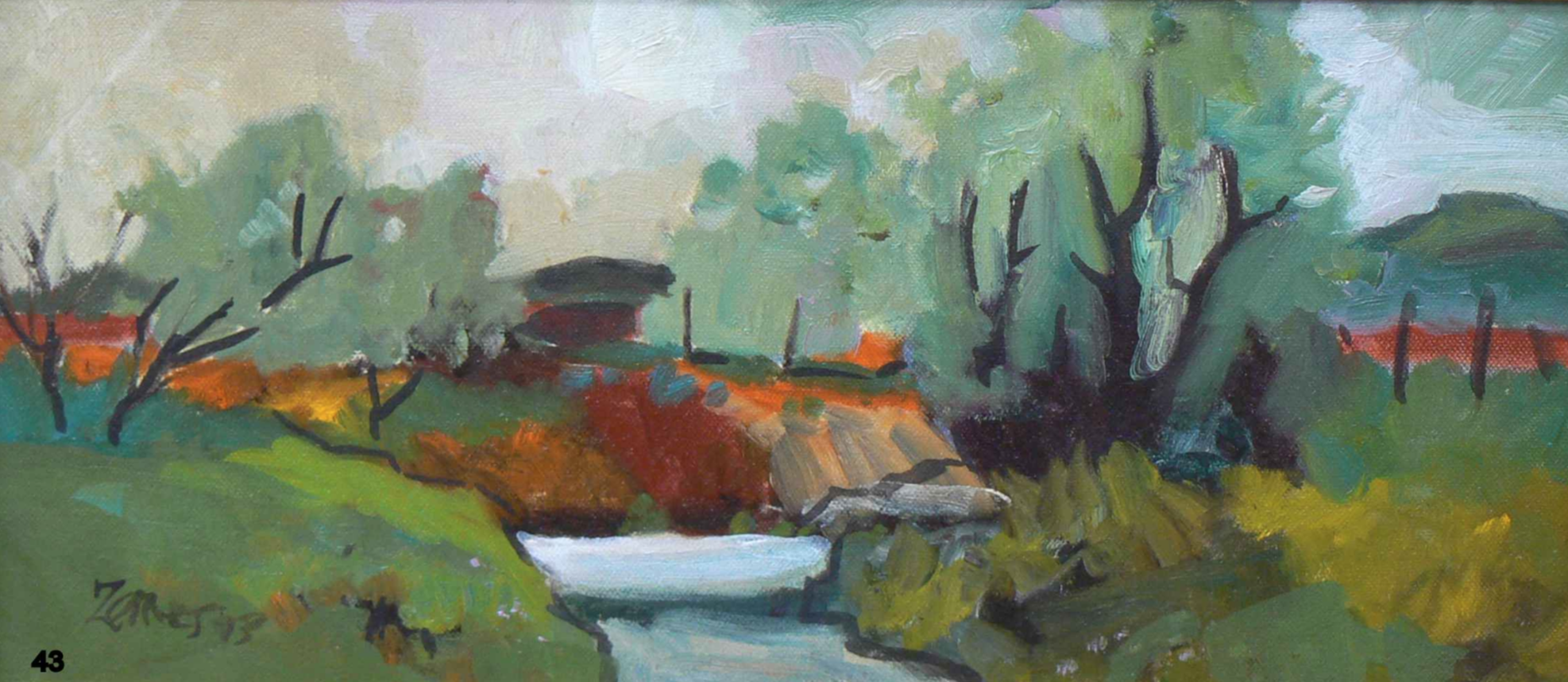
Zornes’s background and youthful wanderlust
Perhaps one of the reasons Zornes was able to face the struggles of macular degeneration, and then to write about them so honestly, is because he was, deep down, an adventurer. A person who relished the opportunity to confront difficulty.
Zornes was born in 1908 in Camargo, Oklahoma, a prairie town. Until non-Native Americans were permitted to settle there starting in 1892, it was part of a Cheyenne and Arapaho reservation. He was born so far out in the country that his birth was never recorded. His mother, who had been a schoolteacher, taught him to draw to keep him out of trouble, as he told an interviewer at his alma mater, Pomona College, a few months before he died. (In 2008, at the age of 100.)
Yet his promise must have seemed clear. In a drawing he made at age ten, of a little girl thought to be his sister, Zornes deftly mimics the drawing conventions of his day. Though the girl in the picture closely resembles the Morton Salt Girl, which he must have seen on his family’s table salt, it also shows a striking sureness of line, gesture, and composition for a child.
Zornes’s father, a rancher and wheat farmer, found it hard to make a living in Oklahoma. As a result, the family moved to Boise, Idaho when Zornes was seven. When he was a senior in high school, they moved again, to San Fernando, California. Though he was “the kid who could draw,” it never occurred to him to become an artist. He received no formal art training during his school years.
Explorers, inventors, and artists did what they did, for the “candle”
“Obsessed by the lure of faraway places, the further away and more remote the better,” as he wrote, he aspired, instead, to become an explorer. In particular, the idea of Arctic exploration intrigued him, the fortitude it would require. In a section of his journal called, “Becoming an Artist,” he reminisced about this:
This was shortly before flights to the South Pole by Commander Byrd and the others had more or less destroyed the aura of reaching these places by sheer physical effort and indomitable will. My concept of arctic exploration was summed up in the vision of mushing through snow and over icy wastes with a dog team. My youthful passions were stirred by thoughts of icy wastes and dark star studded skies and the fierce discipline of bare existence.
Zornes wrote to the Icelandic-American Arctic explorer, Vilhjalmur Steffansson, and asked how he might follow in Steffansson’s footsteps. When Steffansson wrote back, he wanted to know what Zornes planned to study in the northernmost reaches of the planet. Zornes realized that his fantasy of Arctic exploration was just that—a fantasy, one derived from wanderlust and an urge to do something challenging with his life. But, while Steffansson’s questions poked a hole in Zornes’ adolescent dream of Arctic exploration, a piece of advice he gave Zornes became central to the young man’s artistic vocation:
He said that I must remember that explorers, inventors, and artists did what they did, for the “candle,” and that it was others who came after them who sought fame and money. This made an impression on me.
Searching for a path
When Zornes graduated from San Fernando High School in 1925, he tried out a few different professions. Still oblivious of his true calling, he worked briefly as a freelance journalist. Then, thinking he might like to be an architect, he took engineering classes at Heald College in San Francisco. The math classes gave him trouble. His urge to travel as strong as ever, he left school and hitchhiked across the United States. He ended up in New York, where he boarded a Denmark-bound freighter as a seaman. When the freighter docked in Copenhagen, he left the boat and toured Europe until his money ran out. He got back to California with help from the Sailor’s Relief Society.
Having returned home in 1929, he couldn’t get a job or go to school because of the stock market crash. Since he’d enjoyed art so much earlier in his life, it seemed natural to fill his time painting. And he became, as he wrote, “lost to it.” He went to his father, announcing that he wanted to be a painter:
My father had wanted me to go into partnership with him in his business, so I was a little shaky. I didn’t know exactly what being a painter truly entailed, but my father, after some thought, said, “Well, if you’re going to be one, be a good one.”
Art Training, early career, and World War II service
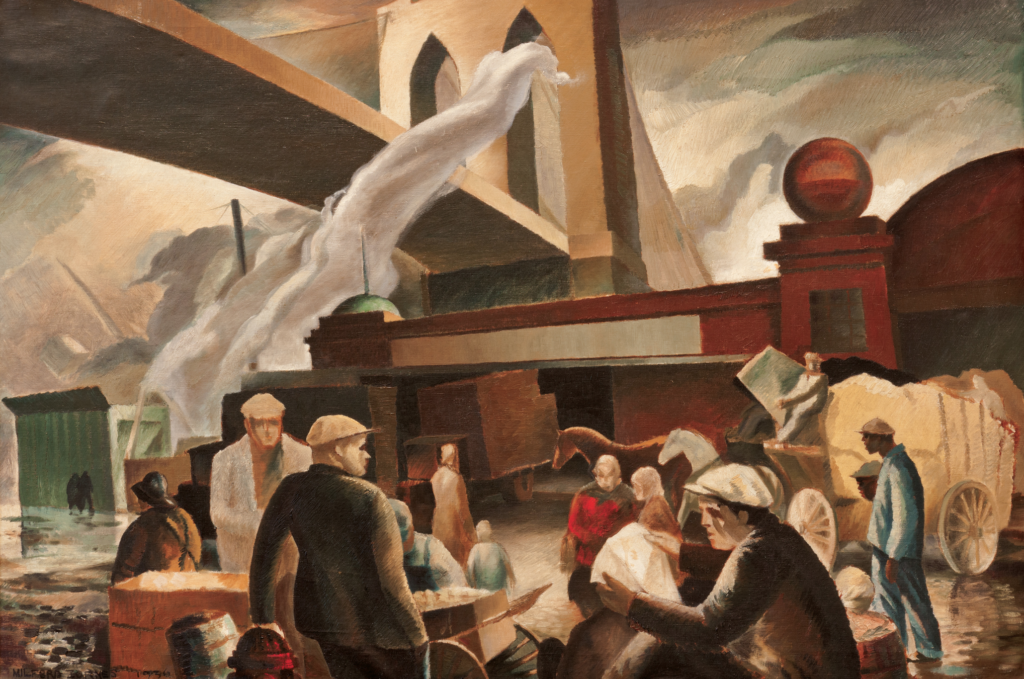
Zornes enrolled at Pomona College in 1930 in order to study with Millard Sheets, a California Scene painter who was only a year older than Zornes but more advanced in his artistic practice. After a few years of training, Zornes got work through the federal Works Progress Administration (WPA) painting murals. (One of the mural he painted was in the post office of his hometown of Claremont, California.)
In 1943, he was drafted into the Army as part of a battalion of creative types from Southern California. Assigned to be an Artist’s Correspondent, he drew scenes of both the American Army and local life in Asia—a job made to order, given his interests. Over the course of twenty-eight months, he traveled extensively in China, Burma, and India. In a 1965 interview with Betty Lochrie Hoag for the Archives of American Art at the Smithsonian Institution, he fondly recalled this time of extraordinary freedom:
Though I was in the army, and I had to follow army directions… there was no one in the theatre who knew a great deal about what we were there for. [So] we were able to direct ourselves quite a little bit. For instance, when I wanted to go to Burma, I simply indicated my desire to go, and what I felt was the need to go, and I could usually get my officers to write orders so that I could go.
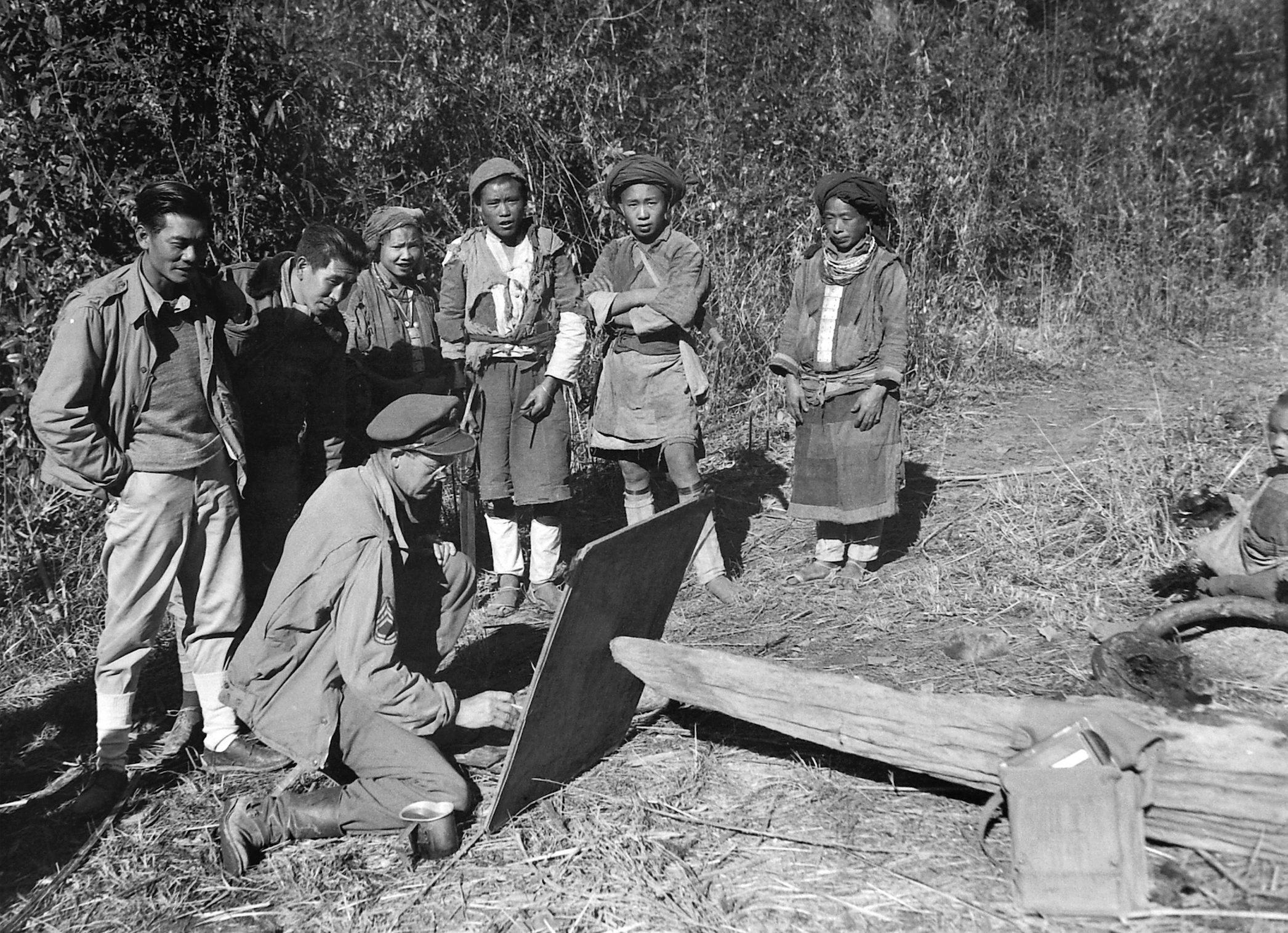
Building a career after World War II
After the war, Zornes began teaching at Pomona College. He resigned after only a few years, however, because it dominated his working life and allowed little time for painting.
By then, he had married his wife, Pat Zornes, and had a child to support. For about ten years after leaving Pomona, as he slowly built a painting career, he worked a string of jobs unrelated to art. Not until the mid-1960s did he begin earning a livelihood from his art. By then, several major museums had acquired his work (including the Metropolitan Museum of Art and Los Angeles County Museum of Art). He was an integral member of the California School of Watercolor Painting. As such, he was regularly featured in art magazines and had been interviewed by the Archives of American Art.
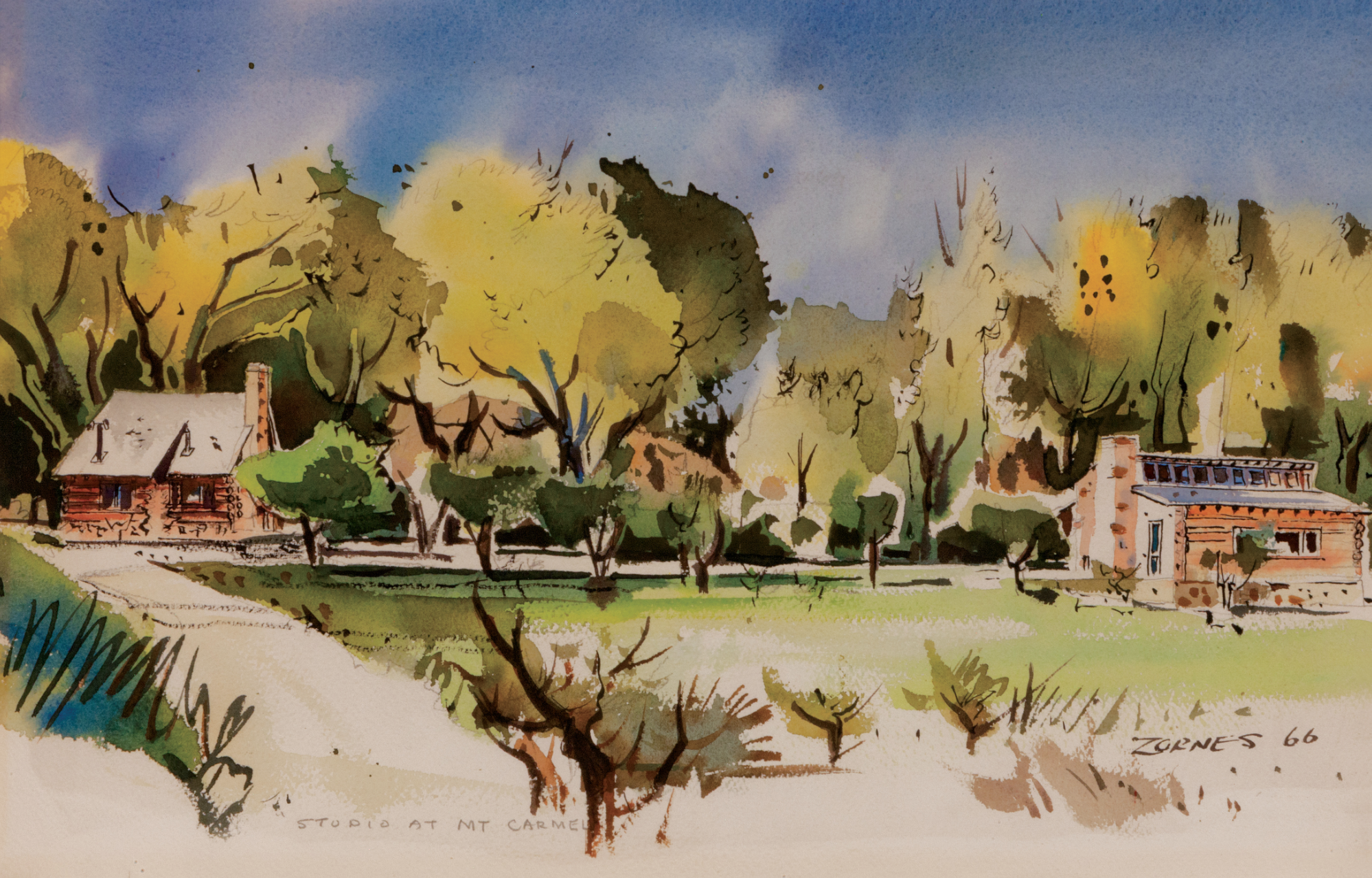
When Zornes lost his vision after the slow work of building a successful career, it was as if he had to start over again. In “Demand to See,” he alludes to how much work, determination, and “aggressiveness” this took. But he felt he had no choice. He had to adapt his working methods and prevail. Art wasn’t merely his profession. It was a way of life. And he couldn’t “give in to a circumstance that threatened his whole aim and purpose” in life.
What narratives of overcoming often omit
When we face adversity, our culture has a ready narrative that, consciously or not, we have absorbed from a young age. The narrative of overcoming, prevailing—The Little Engine That Could (and countless other stories). It’s supposed to be inspiring but can impose an unrealistic expectation on us that we transcend limitation and seek closure to suffering. Which, in turn, can be oppressive and demoralizing.
As regards artists with vision loss, for instance, one need not dig deep to find simplistic stories of how, despite vision loss, the artist prevails. These stories rarely mention the many losses of blindness. They rarely delineate the messy mix of emotions, many of them negative, that one experiences when trying to cope with vision loss. Or the fact that loss may diminish over time but may never entirely go away.
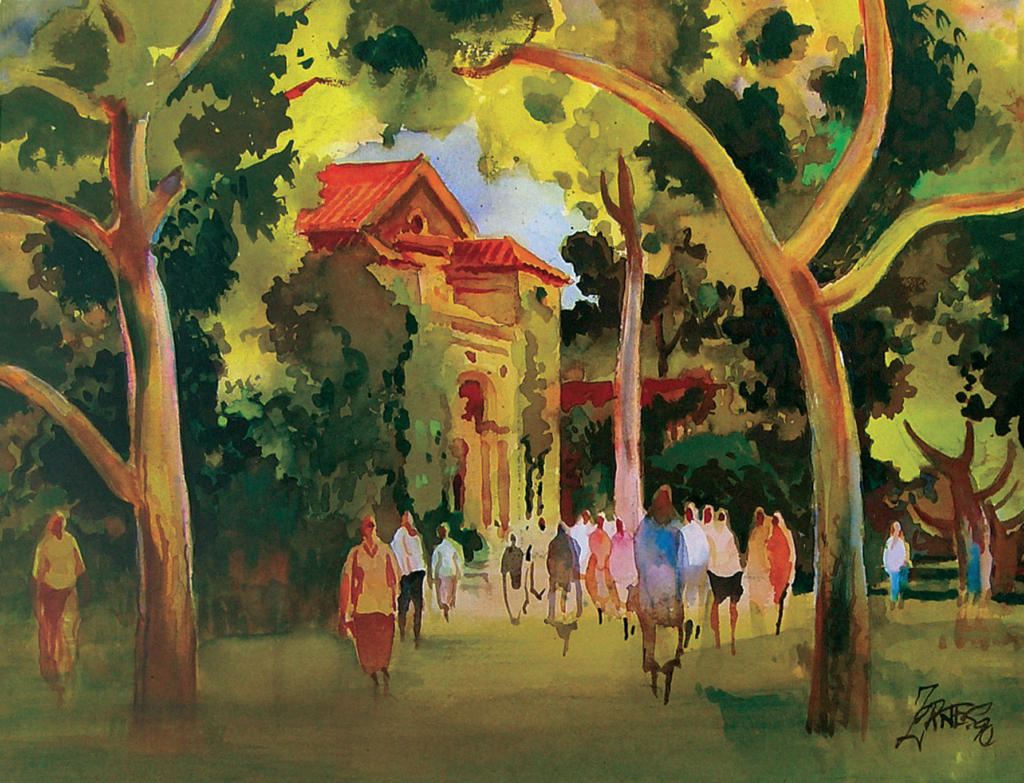
In “Demand to See,” Zornes had the courage to observe, feel, and recount the complex, messy experience of losing sight. Don’t get me wrong; he did want to give people with macular degeneration hope. In so doing, he invokes a familiar narrative of transcendence:
There is much one can do about [no longer seeing well]. One can demand to see. Where eyes fail, the spirit can take over. … An afflicted person young or old can take account of himself. “I can do,” “I can teach,” “I can work,” “I can help,” “I can write,” “I can share life,” “I am partially blind,” “I can help the completely blind.”
But he also validated what someone’s lived experience of loss can entail if they have to do as Zornes did. That is, in Zornes’s words, if they have to “reconstruct their lives in bodies less fully equipped” than the ones they were first “gifted with.”
The messy emotions of vision loss
Zornes describes falling into a “complete depression,” one that caused him to question if life was worth living without good vision. He “lost perspective,” felt embarrassed because he needed to rely on his wife for things he had once done for himself (such as drive), and became anxious about money. He couldn’t read, walk, or make things as he once had. Nor could he travel as freely as he once had, which made him feel helpless.
With the loss of vision, I seemed to loose [sic] an anchor in reality. I suffered a deep and persisting sense of guilt. Why had I let this happen to me, to us?… Of course others had suffered this, complete blindness, terrible crippling injuries. Why should I be the only one. That was reasonable, but this was me. That was the difference.
As his vision deteriorated, he became frightened:
Black spots in my vision and a few unnerving experiences in my driving. Yes! There was something going on here. There were large floating islands of dark. There were flashing lights, strange networks of lines. All straight lines were becoming distorted. There was a grid of lines, like a fish net. Lavender and green blots floating continually before my eyes. It was confusing and disturbing. My wonderful experience of seeing was so much a part of me, yet one that had been taken for granted. It was becoming, distorted, blurred and frightening.
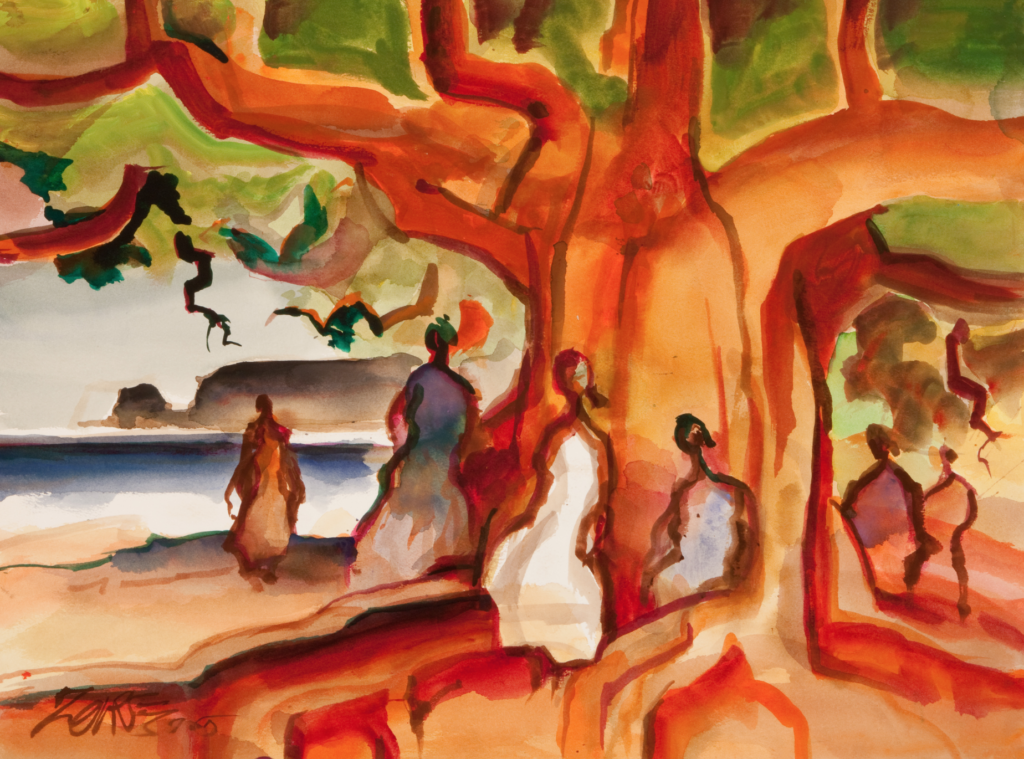
He was frustrated that so little was known about the disease, and searched for cures. Until he understood the risks, he considered submitting to an experimental treatment using interferon. He also considered undergoing a surgery that involved the “scrapping [sic] of the retina.” For a time, he wore a cumbersome imaging device developed by NASA. It ended up being too expensive and crude a tool to be of use.
Acceptance and adaptation
Gradually, Zornes began to adapt. He learned to do such things as walk alone on the streets, using his peripheral vision and “heightened awareness.” Other adaptations followed. An avid reader, he began listening to books on tape. He found he could still teach. Not only that, he was possibly a stronger teacher because his blindness to detail allowed him to access and assess “the whole design” with new insight.
His studio had typically been messy. He organized it, creating systems that helped him find the materials and tools he needed as he was working. If he used binoculars, he could still paint on location. And he discovered that his lifetime of drawing and painting enabled him to put things down with his eyes closed. Literally. Though his painting “became all work,” it also, like the teaching, became stronger in some ways, because of his limitations:
I must see the basic design more clearly and make the execution of the picture more direct, making the power of the basic design supply the vitality rather than the niceties of technique. To conceive of a form then build it is more direct and meaningful than finding form through devices of technique. Now I had to think and paint. I had to have the structure of a picture to hang my painting technique upon. …
Treasuring “every view and every opportunity to see”
Near the end of his essay, Zornes writes about the profound realizations that came with blindness. He took less for granted and valued “every view and every opportunity to see.” He would return from travel with more impressions and memories than before, impressions “as clear in my mind as any I have ever experienced.” He came to understand that he had always been partially blind. That vision involved more than the eyes:
When eyes fail, the spirit can take over. After all, the eye is only the instrument for seeing. It is through the mind and spirit, fed and served by the senses, that one’s life is lived with understanding and reward.
Amid these epiphanies and insight, though, Zornes also writes about the daily losses of blindness. He had to experience things vicariously through his wife; hadn’t the freedom of movement he’d once enjoyed; missed seeing people’s faces and the food on his plate.
The essay is notable, for the imperative—demand to see—that Zornes directs to his audience, which he imagines to be others with macular degeneration:

In the final analysis seeing is about mental energy and viewing from within… Demand to See and you can see. Vision is a state of mind.
In the end, an authentic account of loss
When I first read “Demand to See” years ago, the writing seemed awkward, which inclined me to overlook its importance. On rereading “Demand to See” more recently, however, it stood out as a vital, one-of-a-kind record of an artist’s personal reckoning with vision loss. Throughout “Demand to See,” Zornes uses the passive voice, as if, even a decade on, it was still too painful to fully own his diagnosis and long journey to acceptance. Yet how much more inspiring—and human—Zornes’s moments of triumph and insight are, entangled as they are with his acknowledgment of struggle and loss.
See milfordzornesna.com for more about Zornes’s legacy and to access the entirety of “Demand to See.”
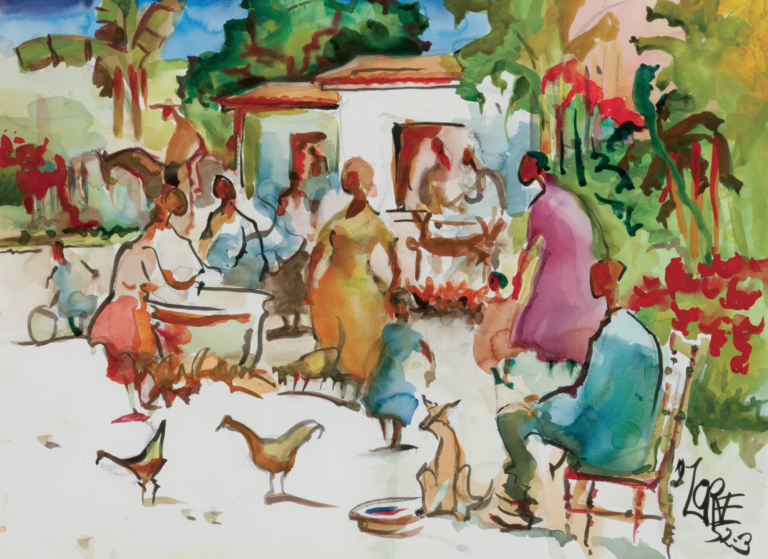
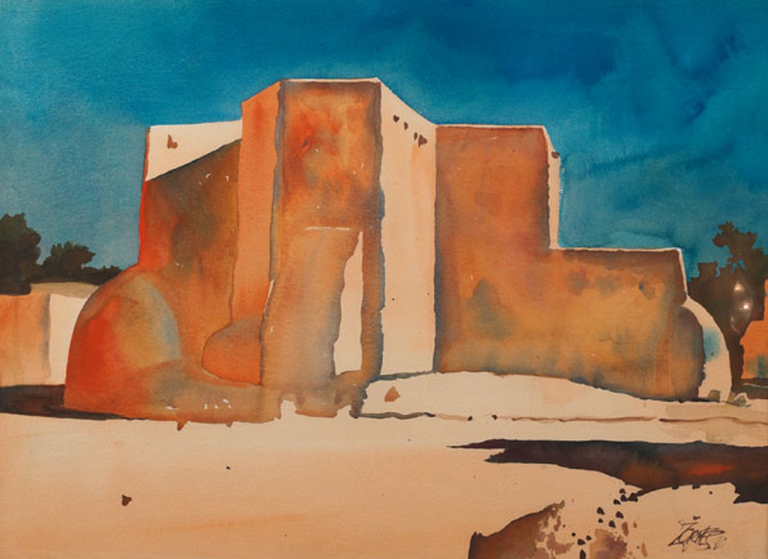
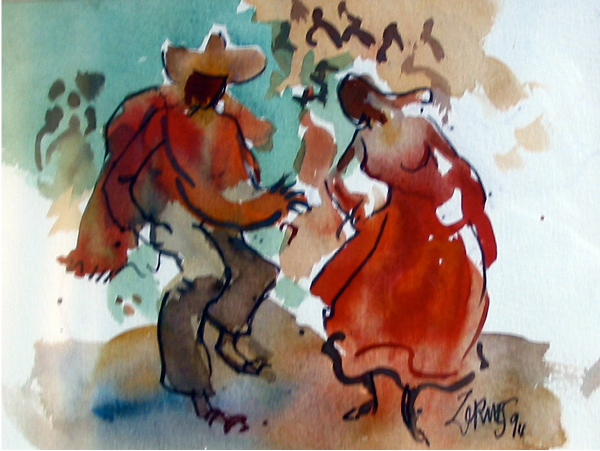
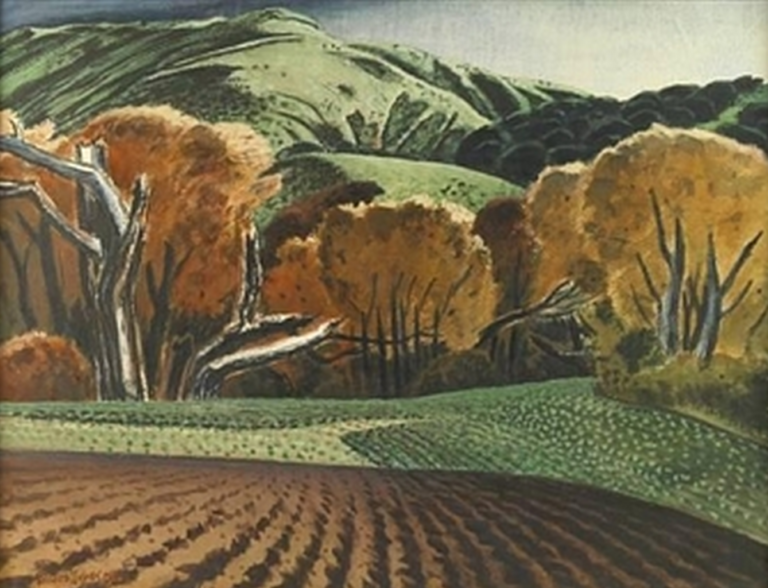

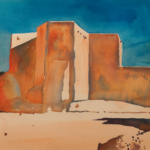
Comments
Milford Zornes thoughts about his condition, his depression and subsequent rising to the challenge of working around it moves me deeply. I have felt from the time I could think, that losing me sight would make me permanently sad. That I could not see the world, the beauty, the color, the faces of people I loved around me would make me feel I had lost what was most important. Like my father, I suffered migraines, and lying in the dark I had these thoughts and feelings. I have lost some hearing, but this can be rectified by hearing aids and is a breeze of a loss compared to sight. So I have great respect for Milford that he found a life of meaning and continued to paint beautifully using his mind, heart and will to overcome so much.
Leave a Comment